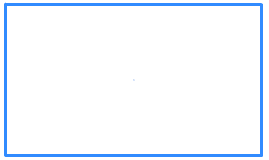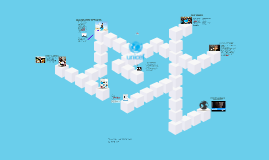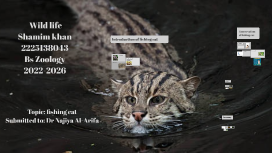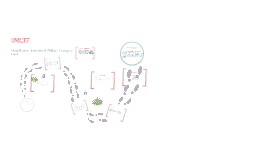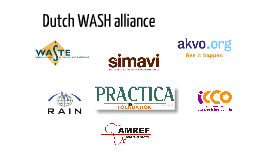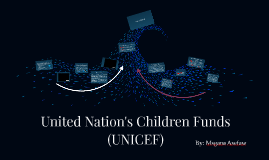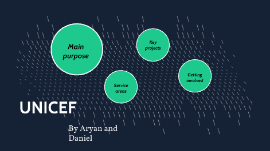UNICEF Presentation
Transcript: UNICEF keeps databases that include estimates for countries covering at least 80% of the developing world that estimate for education rates, maternal health capability, child mortality rates, and household surveys to accurately identify “potential areas for intervention” (Murrary & Newby, 2012). Collecting information on child mortality rates from pneumonia/diarrhea in Saharan Africa/South Asia in order to equitably deliver medical aid By: Msgana Asefaw How has UNICEF brought indigenous peoples into goals of global citizenship? What are UNICEF’s attitudes towards refugees? United Nation's Children Funds (UNICEF) Bosch, X. (2004). UNICEF calls for action to protect indigenous children. The Lancet, 363(9411), 789-789. Chien, J. H., & Lupton, C. (2013). Cultivating the next generation of indigenous leaders UN global indigenous youth caucus. Cultural Survival Quarterly, 37(3), 16. Murray, C., & Newby, H. (2012). Data resource profile: United nations children's fund (UNICEF). International Journal of Epidemiology, 41(6), 1595-1601. All other information was retrieved from www.unicef.org Mission and History Video retrieved from: www.youtube.com/unicef More About UNICEF Information retrieved from: www.unicef.org Thanks for Watching! The UNICEF has released statements regarding indigenous as the “most vulnerable and marginalised groups in the world” (Bosch, 2004). Data investigational research has been conducted and funding prioritized to train indigenous as health workers that can blend the traditional aspects of healing with modern techniques How does UNICEF embody global citizenship through information ethics? The UN Declaration on the Rights of Indigenous Peoples in 2013 recognized Indigenous rights and preservation of traditional culture - to live freely without discrimination. UNICEF invited indigenous children to take part in the declaration launch “New version of the declaration is visually accessible and uses language that younger people can understand” and UNICEF holds youth in high regard as they are essential to communicating to governments and indigenous communities the declaration (Chien & Lupton, 2013). UNICEF thus recognizes the indigenous people of being part of the global picture with rights of protection regardless of existing border/state laws How does UNICEF directly work to promote human rights? Information retrieved from: www.unicef.org References How has UNICEF gone beyond country legislations and borders to represent Indigenous peoples? Created in December, 1946: Its mission was to provide emergency relief to children who were victims and refugees of World War II A subset of the United Nations Relief and Rehabilitation Administration Initially, UNICEF used gov’t, stakeholder, and personal donation funding to provide food aid and tuberculosis vaccination for over 10 million children. By the 1950s, the UN decided to make UNICEF a permanent organization that would develop long-term goals of child aid, healthcare/educational systems, and maternal health education, as it had become very well-known In the 1980s UNICEF called for a strategic plan of financial support on a sustained basis for Africa to aid the children dying from preventable deaths, such as by disease and starvation. By 2006, UNICEF had partners in 157 countries, with 7000+ workers helping to provide assistance and promote children's rights. In conjunction with other U.N. agencies and nongovernmental organizations What is UNICEF? Information retrieved from: www.unicef.org UNICEF, which stands for United Nation Children Funds, is a non-profit program (within the United Nations) which serves to address the needs of children throughout the world. Mandate: "UNICEF fights for the rights of every child, every day, across the globe." The initiative was founded on December 11, 1946 as to provide food and healthcare services in countries where children were deprived due to the second world war. The organization works in the following areas as to create justice, fairness, and peace: Child Protection and Inclusion Child Survival (health, nutrition, sanitation) Education Emergencies Gender (Equality for women and girls) Innovation for Children (Creative solutions) Supply and Logistics (Providing aids, materials, and resources) Research and Analysis UNICEF aims toward creating new policies and establishing services for a more safer and enriched child. Video retrieved from: www.youtube.com/unicef UNICEF has been fighting 70 years for children around the world regardless of age, race, class, sexuality, religion. The organization aims to help those who are in need during desperate, uncomfortable, or harsh times. The work is carried out in 192 countries with multiple offices and partnerships. An important emphasis is placed on "empirical data, rigorous research and thoughtful analysis" within the framework of applying and doing. UNICEF publishes reports as to provide awareness and further promote change, action, movement. Anyone can be a part of






